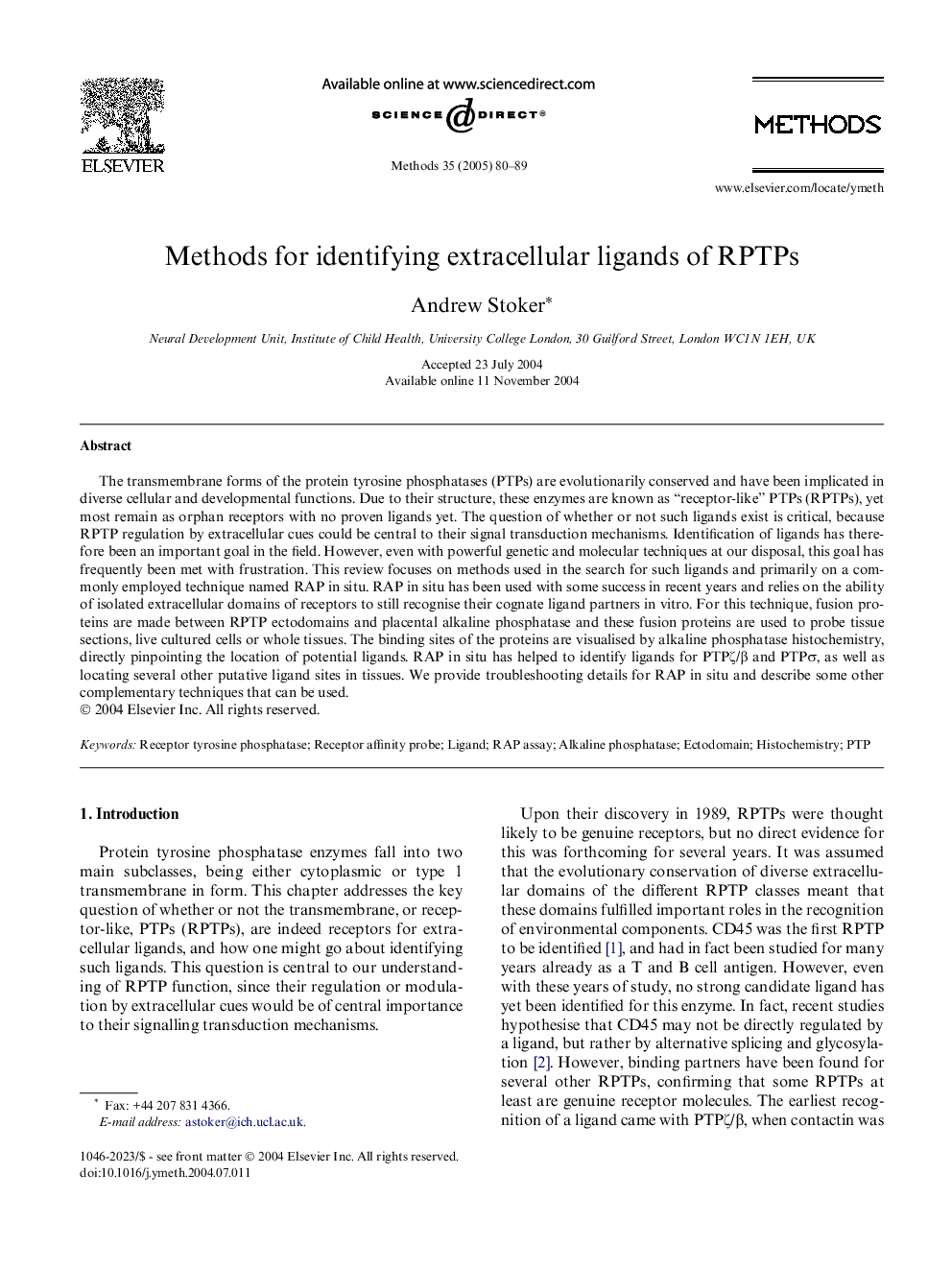| کد مقاله | کد نشریه | سال انتشار | مقاله انگلیسی | نسخه تمام متن |
|---|---|---|---|---|
| 10826756 | 1064829 | 2005 | 10 صفحه PDF | دانلود رایگان |
عنوان انگلیسی مقاله ISI
Methods for identifying extracellular ligands of RPTPs
دانلود مقاله + سفارش ترجمه
دانلود مقاله ISI انگلیسی
رایگان برای ایرانیان
کلمات کلیدی
موضوعات مرتبط
علوم زیستی و بیوفناوری
بیوشیمی، ژنتیک و زیست شناسی مولکولی
زیست شیمی
پیش نمایش صفحه اول مقاله

چکیده انگلیسی
The transmembrane forms of the protein tyrosine phosphatases (PTPs) are evolutionarily conserved and have been implicated in diverse cellular and developmental functions. Due to their structure, these enzymes are known as “receptor-like” PTPs (RPTPs), yet most remain as orphan receptors with no proven ligands yet. The question of whether or not such ligands exist is critical, because RPTP regulation by extracellular cues could be central to their signal transduction mechanisms. Identification of ligands has therefore been an important goal in the field. However, even with powerful genetic and molecular techniques at our disposal, this goal has frequently been met with frustration. This review focuses on methods used in the search for such ligands and primarily on a commonly employed technique named RAP in situ. RAP in situ has been used with some success in recent years and relies on the ability of isolated extracellular domains of receptors to still recognise their cognate ligand partners in vitro. For this technique, fusion proteins are made between RPTP ectodomains and placental alkaline phosphatase and these fusion proteins are used to probe tissue sections, live cultured cells or whole tissues. The binding sites of the proteins are visualised by alkaline phosphatase histochemistry, directly pinpointing the location of potential ligands. RAP in situ has helped to identify ligands for PTPζ/β and PTPÏ, as well as locating several other putative ligand sites in tissues. We provide troubleshooting details for RAP in situ and describe some other complementary techniques that can be used.
ناشر
Database: Elsevier - ScienceDirect (ساینس دایرکت)
Journal: Methods - Volume 35, Issue 1, January 2005, Pages 80-89
Journal: Methods - Volume 35, Issue 1, January 2005, Pages 80-89
نویسندگان
Andrew Stoker,